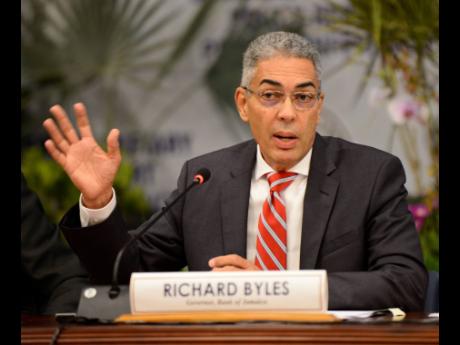BOJ explains May fall-off in remittances
Remittance inflows, a general indicator of economic conditions and purchasing power, fell in the period January to May this year, sparking from the Bank of Jamaica, BOJ, which tracks the flows, an explanation that points away from a worsening of this economic indicator. Rather than reading the signal as a slowdown in income to households, the central bank’s take is that with an uptick in travel, more people are taking in cash on their person as they travel to Jamaica. The BOJ did not give details of its recording of cash-in-hand remittance.
“The decline in remittance inflows is partly due to increased cash-in-hand remittances as travel recovers,” the central bank stated in its latest remittance bulletin for May.
When outflows are factored in, net remittance inflows dipped 6.7 per cent, or US$19.5 million, in May to US$271.2 million, compared to May 2021. Total inflows also fell by US$25 million, or more than 8 per cent over May last year, to US$283.4 million. The central bank said the decline in total gross remittance inflows largely reflected a fall of 5.3 per cent in inflows via remittance companies. Inflows via other remittance channels were also down 25 per cent.
For the period January to May, total net remittance inflows dropped 3.0 per cent from a level of US$1.3 billion last year to US$1.26 billion for the 2022 period. In 2021, Jamaica reported remittance inflows of US$3.5 billion for the year.
Remittances are sums of money sent from relatives or acquaintances as gifts rather than as payment for the provision of goods or services. In recent years, these flows have consistently provided an area of growth in the economy suffering from the economic fallout of the COVID-19 pandemic. In 2020, Richard Byles, the governor of the BOJ, reasoned at a press briefing that the then rise in remittances was probably due to more persons using formal money transfer channels to send funds to the island, since air travel was largely curtailed. Now, the central bank has codified the inverse association in its bulletin.
It is the second month this year that remittances are down. In March, remittance flows suffered the first decline in eight quarters since the onset of the pandemic. Jamaica receives the bulk of its remittances from the United States, United Kingdom, Canada and the Cayman Islands. These countries have significant numbers of migrant workers who send funds to family and friends in Jamaica.
Wih the travel recovery, June 2022 was the first month in which arrivals to the island surpassed pre-pandemic levels, according to travel data from the Pacific Airport Group, which owns the Sangster International and Norman Manley International airports. Tourism Minister Edmund Bartlett has said that 300,000 visitors are expected in the island in this month.
The reduction in remittances comes as most of the world grapples with higher-than-usual inflation. In Jamaica, inflation is hovering at a decade high, running at 10.9 per cent over 12 months to June.

